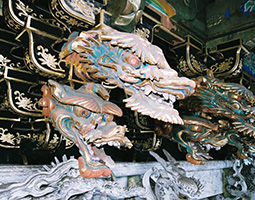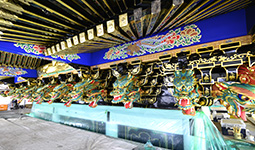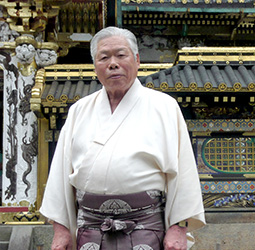Home > Highlighting JAPAN >Highlighting Japan June 2016>Living Heritage
Highlighting JAPAN
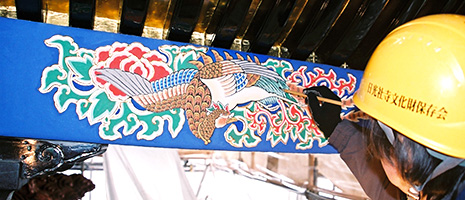
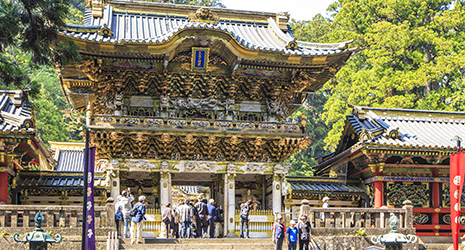
True Colors
Nikko Toshogu in Tochigi Prefecture is one of Japan’s most popular sightseeing spots. A UNESCO World Heritage Site, the shrine is presently undergoing restoration work that will last some twenty-two years and which employs materials and techniques true to the time of its construction almost 400 years ago.
Ieyasu Tokugawa is the remarkable man who ended the Warring States period and ushered in the Edo period (1603-1867), a time of peace lasting more than 260 years when a wide range of cultural traditions were established.
Ieyasu died in 1616 at the age of 75 leaving a will in which he asked to be buried in Kunouzan (present-day Shizuoka Prefecture) and, a year later, entombed in a “small shrine” in the Nikko mountains. In accordance with his father’s wishes, the second shogun, Hidetada Tokugawa, built a shrine in what is now Tochigi Prefecture in 1617. This was the original Nikko Toshogu shrine. In 1636, the third shogun, Iemitsu Tokugawa, ordered the shrine to be rebuilt and, under the master carpenter Munehiro Koura, the present-day complex was duly completed. Of the forty buildings in the shrine complex, eight have been designated as National Treasures and the other thirty-two are Important Cultural Properties.
During the Edo period, Nikko Toshogu was an important center for the syncretization of Shinto with Buddhism. However, as a result of the Ordinance Distinguishing Shinto and Buddhism in the Meiji period (1868–1912), the complex was separated into the Toshogu shrine, Rinnoji temple and Futarasan shrine.
In 1999, the precincts of the two shrines and temple were registered as World Heritage Sites. Attracting almost 2 million visitors from home and abroad every year, Nikko Toshogu has become one of the most popular tourist destinations in Japan.
More than twenty-one small and large restorations of Nikko Toshogu have been carried out over the years to preserve its original features. The Heisei Renovations, a major project that will last for twenty-two years from 2003 to 2024, are presently underway.
“Lord Ieyasu established the foundations for peace and culture in the Edo period, significantly contributing to the development of modern Japan,” says Chief Priest Hisao Inaba. “To ensure that the authority of Lord Ieyasu, who has become the god Tosho Daigongen, will continue to influence people in the future, we believe that it is our duty to continually restore Nikko Toshogu to maintain the dignity of the buildings.”
There are as many as 5,000 reliefs carved into the buildings and gates of the shrine complex. Among the symbolic carvings are the 714 depictions of animals and imaginary beasts including monkeys, giraffes, dragons and the elephant-like baku, a supernatural creature said to eat nightmares. The baku is also said to eat steel and copper, and therefore symbolizes a peaceful world without weapons. The famous carving of a sleeping cat by Jingoro Hidari is another interesting depiction of peace. Although apparently fast asleep, the cat also looks ready to leap to the protection of his master, Ieyasu.
Restoration of the richly decorated Yomeimon Gate, entailing specialized lacquering, painting and gilding work, is now almost complete and the structure will be returned to its original glory by March 2017.
“It is a basic policy of the craftsmen carrying out the restoration work to adhere as strictly as possible not only to the original designs, but also to the original materials and construction techniques,” says Chief Priest Inaba. “For example, the craftsmen use only the highest-quality Japanese lacquer for all layers, from the undercoating through to the final coating. Local materials are the most suitable for the local climate, and we believe that using them is conducive to the protection of the very essence of these cultural properties. Unfortunately, environmental change has depleted the number of lacquer trees which used to grow in the Nikko mountains. These trees must be protected. To protect and pass down the essence of the cultural properties through the generations, it is also vital to train people in all the traditional construction and restoration techniques.”
© 2009 Cabinet Office, Government of Japan
